Lindenfels
Lindenfels is a town in southern Hesse, Germany and known as the “Pearl of the Odenwald”. In the middle of the town stand the ruins of the Lindenfels castle with a great view into the distance over the Weschnitz valley.
Reichelsheim
Reichelsheim is a community in Hesse, Germany. It is located in the middle Odenwald and was first mentioned in 1303. The Schloss Reichenberg (Richenburg Castle) was first mentioned in 1307 and was used as a private upperclass boys’ school from 1876 to 1924. Nowadays, it is a publicly accessible international meeting and conference centre with a palace café.
Fürstenlager
The Fürstenlager was built around 1790 by the landgrave and grand duke of Hesse-Darmstadt in Bensheim-Auerbach, Germany. The park includes over 50 exotic trees and bushes, e.g. the 150 years old giant redwood and a multitude of different buildings in the back.
Darmstadt – Waldkunst
The first sculptur is named “Time Bomb” from Ernest Daetwyler and is placed in the forest near the US army base in Darmstadt. The whole work is built from wooden elements found around Darmstadt: chairs, beds or tables… Everything returned to the point of their origin.
The second installation is 30qm big and is named “A little spider can build much more complex things” from Elena Redaelli.
Burghead, Moray
Burghead is a small town about 13 km north-west of Elgin, Scotland. The town is mainly build on a peninsula and has sea on three sides. It was built between 1805 and 1809 and the harbour is mainly used by fishing boats.
Day 8 – 08.08.2011 – Newtonmore – Dalwhinnie – Muir of Ord – Burghead
Have Fun!
Speyside Distilleries
The Speyside area is one of the main centres of the Scotch whisky industry and has a high concentration of single malt distilleries, including the Glenfiddich distillery and the Balvenie distillery.
The Cardhu distillery is situated near Archiestown, Moray, Scotland, founded by the whisky smuggler John Cumming in 1824. The distillery started as farm distillery working on a seasonal basis and was running by his wife Helen Cumming, who used to sell bottles of whisky to passers-by through the window of their farmhouse. In 1893 the distillery was sold to Johnnie Walker and Sons and the whisky makes up an important part of the famous Johnnie Walker blended whiskies.
Cragganmore is a whisky distillery located in the village of Ballindalloch in Banffshire and was founded in 1869 by John Smith. The place was chosen for its proximity to the waters of the Craggan burn and because it was close to the Strathspey Railway.
The Glenfiddich Distillery is owned by William Grant & Sons in Dufftown and Glenfiddich means ‘Valley of the deer’ (Gaelic), hence the presence of a deer symbol on Glenfiddich bottles. Glenfiddich has now become the world’s best-selling single malt and it is sold in 180 countries, and accounts for about 35% of single malt sales.
The Tormore is one of the younger Scottish whiskies, the distillery construction began in 1958 and was completed in 1960. It was designed by Sir Albert Richardson and it is one of the most architecturally striking distilleries. The main building is made of granite, has copper rotors and a clock which plays four different Scottish songs each quarter of an hour. The nice topiary hedges in the front garden are clipped to the shape of a bell or still.
Have Fun!
Dalwhinnie Distillery
The Dalwhinnie Distillery was founded with the name of the nearby town Strathspey in the late 1890s and is set in splendid mountain scenery. Furthermore, it is the the highest distillery in Scotland. Only 10% of the produced Whisky is marketed as single malt, the remaining being used in the Black & White blends.
Day 8 – 08.08.2011 – Newtonmore – Dalwhinnie – Muir of Ord – Burghead
Have Fun!
Isle of Skye – Neist Point Lighthouse
Neist Point Lighthouse commands one of the finest vintage points in Scotland. The Lighthouse is sitting in the north west of the Isle of Skye (Duirinish peninsula) and presents the most westerly point of the island. It is renowned for the impresive rock formations, which closely resembles the famous Giant’s Causeway in Northern Ireland. A steep path leads down from the road.
The Lighthouse was designed by David Alan Stevenson and was first lit on 1 November 1909. The aerial cableway is used to take supplies to the lighthouse and cottages. Since 1990, the lighthouse has been operated remotely from the Northern Lighthouse Board headquarters in Edinburgh.
Have Fun!
